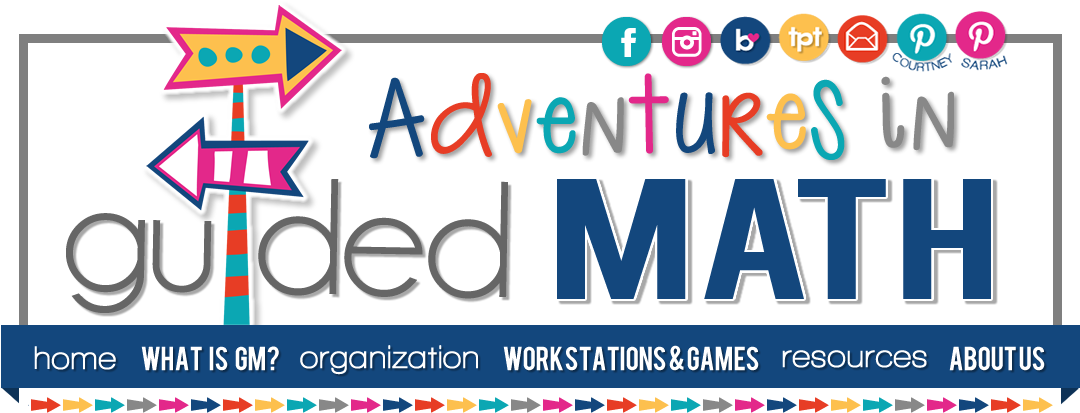To read my previous Number Talks discussion of Chapter 1, and the beginning of Chapter 2, please CLICK HERE!
Chapter 2: How Do I Prepare for Number Talks, continued.
First, I would like to share how my students got prepared for number talks. My students do A LOT of talking about math--explaining their thinking, justifying their solutions, comparing/contrasting their strategy use with that of their classmates, assessing the reasonableness of solutions--all while showing respect for their fellow classmates. BUT, I wanted to introduce my students to the Number Talk procedures outlined in the text because there were components of number talks that I had not used. I felt my students would benefit greatly from the consistency in procedures as well.
We began, as we do with anything "new", by making a list of expectations. We did this at the beginning of the year when preparing for what we call math "chats", so I thought it fitting to do the same with number talks. I talked to my students about how a number talk would work and asked them to generate a list of behaviors they felt would be important to show during this time. It's interesting how the first two behaviors on their list are almost directly stated from our social skills program and are quite fitting. Loved how "think together" was put on the list. I helped them with the word "praise" as a description of the kinds of positive things we say to one another when sharing ideas, even when there are some errors in thinking.
I also introduced the silent hand signals they would be using during number talks. We practiced them several times before having our first "official" number talk. The signals are posted as reminders, yet they will not be needed long... Feel free to download these simple posters by clicking the pic below.
I felt my students were ready to go, so I had to make sure I was ready.
Chapter 2 helped to prepare me...
After sharing four procedures and expectations essential to number talks, Sherry Parrish goes on to help teachers understand how important it is to anticipate the ways students will come to a solution. She suggests thinking through the possible strategies students may use to solve a given problem. Even if you are not able to anticipate all of the strategies students will use, preparing yourself ahead of time in this way will increase your ability to understand what is being shared during the number talk. Parrish also stresses the importance of thinking about how you will record students' thinking so that it clearly illustrates each strategy for students.
Below you will see some pictures of how I recorded students' thinking during two different number talks. I will be recording on the SmartBoard just as soon as my computer glitches are fixed. This will be a nice way to store records for easy reference. For now, I am doing it on chart paper.
I chose the problems carefully as suggested early in chapter 2. The majority of my students' understanding of place value is strong, and many use this understanding when adding two digit number, yet I wanted the whole class to see how making a landmark or "friendly" number can work (a strategy that some students have worked with in small guided math groups).
Would love to hear your comments about what you see recorded. Why do you think solutions are crossed out with names written next to them in the second pic? What do you notice about Abbi's thinking from one day to the next?
As I reflect, one of my goals will be the addition/breaking up of each place value as described in the text to illustrate the separation of each digit's value in a different way.
Example:
29 + 29
(20 + 9) + (20 + 9)
(20 + 20) + (9 + 9)
Have I said how much I love number talks already??
Moving on...
I am sure many of you thought about student accountability when reading. I did. Parrish makes six wonderful suggestions for developing students' accountability:
- Ask students to use finger signals to indicate the most efficient strategy.
- Keep records of problems posed and the corresponding student strategies.
- Hold small-group number talks throughout each week.
- Create and post class strategy charts.
- Require students to solve an exit problem using the discussed strategies.
- Give a weekly computation assessments.
AND--What if students still need to develop mental reasoning? Make manipulatives accessible, and use tools such as number lines, hundred charts, rekenreks, and ten frames as appropriate for developing conceptual understanding that is foundational to mental reasoning.
Finally, Parrish suggests five small steps toward teaching for understanding:
- Start with small problems to elicit thinking from multiple perspectives.
- Be prepared to offer a strategy from a previous student.
- It is all right to put a student's strategy on the back burner.
- As a rule, limit your number talks to five to fifteen minutes.
- Be patient with yourself and your students as you incorporate number talks into your regular math time.
In the coming chapter readers receive support for developing specific strategies in their K-2 classrooms. Hope you will stop back this coming Sunday for a discussion of Chapter 3!
Now, some WONDERFUL NEWS!
Sherry Parrish, the author of Number Talks, will be doing a Q&A after the completion of our book study! We are collecting questions now, so feel free to send in any questions you have for Sherry from now up until the first week in February. We will also include a reminder in each of our book study posts. You may send questions to guidedmathadventures@gmail.com
Last, but not least, we would love for you to leave your comments and link up any math made-its you would like to share!
Smiles,







I love how intentional and consistent you are!
ReplyDeleteTara
The Math Maniac